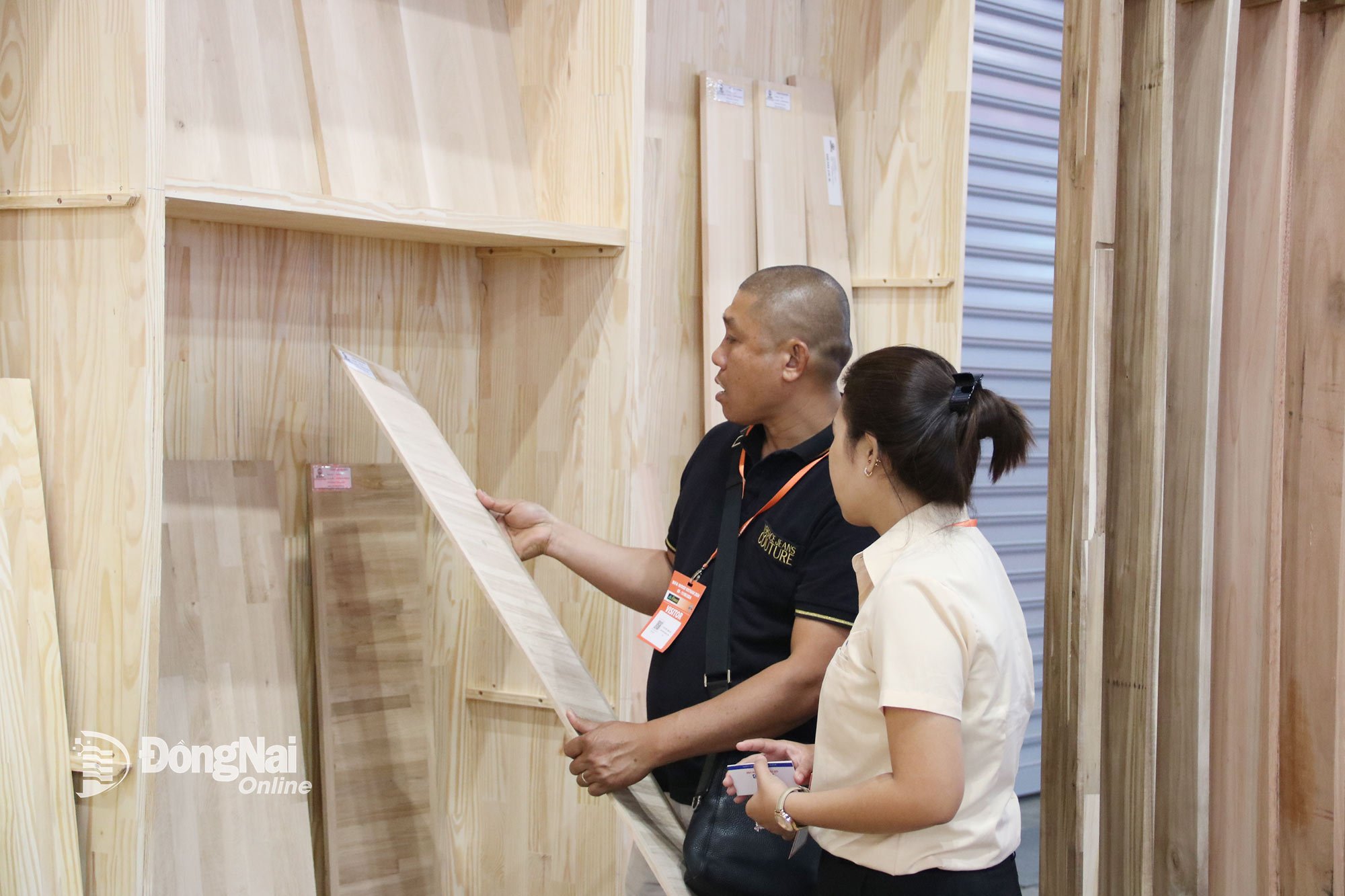 |
| The exhibition booth of Dong Nai Wood and Handicraft Association at an international wood fair. Photo: Vuong The |
In the long term, in addition to having to adapt to frequently changing tariff policies, wood industry enterprises are calculating to improve product quality. Expanding the market and building a Vietnamese wood brand are solutions for the sustainable development of the wood industry.
Continue to face the pressure
On September 29, US President Donald Trump signed a document imposing a 25% tax on wooden furniture (from October 14), this tax rate could increase to 50% for dressers and kitchen cabinets, 30% for upholstery goods early next year. This is considered a "shock" for the Vietnamese wood industry.
The US has invoked Section 232 of the Trade Act of 1974, arguing that: Imports of wood and furniture are “eroding national security”, weakening the domestic wood industry and threatening the supply chain related to infrastructure and defense. This decision by President Donald Trump will impact countries that export large quantities of wood to the US such as: Canada, Mexico and Vietnam.
For Vietnam, the US is currently the largest market for wood products. In 2024, export turnover to the US will reach about 9 billion USD, accounting for over 50% of the total export turnover of the whole industry.
According to Mr. Ngo Si Hoai, Vice President and General Secretary of the Vietnam Timber and Forest Products Association, Vietnam's wood exports will certainly be affected after the above decision of President Donald Trump. In the immediate future, Vietnam's exported wood and furniture products will fall into the 25% tax group. If the tax rate increases to 30-50% from the beginning of 2026, many businesses will be forced to recalculate their strategies. Turning around in the short term is difficult, because the US market has a large export proportion of the wood industry. As exporters, businesses in the industry have no choice but to accept the above tax rate.
In fact, the US president’s decision to impose tariffs is not only disadvantageous to exporting countries, but also has a reaction within the US market. This tax increase will risk pushing up domestic construction and production costs, while also reducing the international competitiveness of the US pulp and paper industry. Meanwhile, Vietnam has been a stable and reliable supplier of wood products for many years. Therefore, the new tax rate not only affects manufacturers in Vietnam but also directly affects the entire supply chain and US consumers.
To cope with the difficulties, the solution of wood industry enterprises is to strengthen cooperation in the supply chain, focus on developing e-commerce, accessing new markets and improving competitiveness in the global supply chain.
Find ways to adapt
According to wood industry enterprises, to cope with the changes in tax policies as mentioned above, the State needs to provide more support in terms of market knowledge and information. At the same time, it is necessary to consider research and assessment of tariff risks to support enterprises in coming up with appropriate solutions for each supply chain and each specific industry.
Mr. Nguyen Phuong, Vice President of Dong Nai Wood and Handicraft Association (Dowa), said: In the last months of 2025, the market may decrease depending on the level of fluctuations in tax policies, especially when wood products exported to the US account for more than 50% of the export value of the Vietnamese wood industry. Therefore, businesses must proactively grasp market developments and trade policies from importing countries to have flexible and adaptive solutions.
Another problem for wood industry enterprises is the need to move towards innovation and breakthrough in building brands in the international market. In recent times, despite great efforts to change, the Vietnamese furniture industry has not yet made any breakthroughs, still mainly processing for foreign partners. Enterprises need to continue and strongly pursue the goal of building a professional design and marketing team so that enterprises can sell directly under their own brands.
Sharing the same view, Mr. Nguyen Chanh Phuong, Vice President of the Handicraft and Wood Processing Association of Ho Chi Minh City (Hawa) emphasized the autonomy of enterprises in production. For sustainable development, it is necessary to have a skilled workforce and a legal source of raw materials for enterprises. At the same time, the State needs to issue policies to develop the industry and support the business community in handling problems arising when participating in the world commodity market.
Changes are inevitable, but this is also an opportunity for the Vietnamese wood industry to restructure. In recent years, thanks to its flexibility in following the market, the Vietnamese wood industry has developed strongly. The industry's annual export turnover has reached 16-17 billion USD and still has the opportunity to continue to grow when brand building is given importance.
Wang Shi
Source: https://baodongnai.com.vn/kinh-te/202510/nganh-go-truoc-thach-thuc-moi-68d2ba6/


![[Photo] Prime Minister Pham Minh Chinh inspects and directs the work of overcoming the consequences of floods after the storm in Thai Nguyen](https://vphoto.vietnam.vn/thumb/1200x675/vietnam/resource/IMAGE/2025/10/08/1759930075451_dsc-9441-jpg.webp)



![[Photo] Prime Minister Pham Minh Chinh attends the World Congress of the International Federation of Freight Forwarders and Transport Associations - FIATA](https://vphoto.vietnam.vn/thumb/1200x675/vietnam/resource/IMAGE/2025/10/08/1759936077106_dsc-0434-jpg.webp)





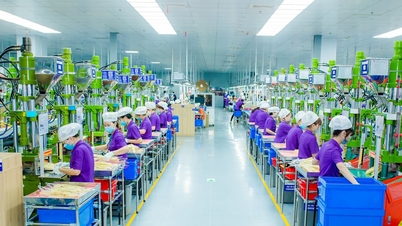

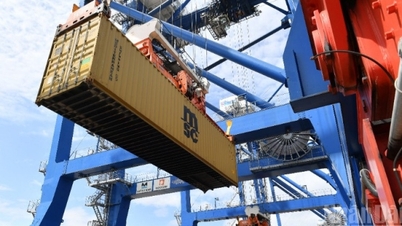


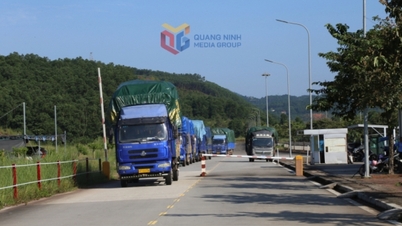






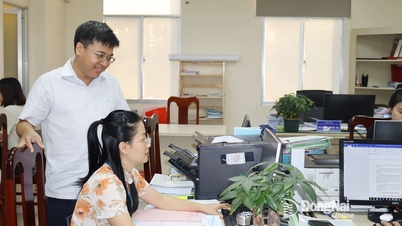





























































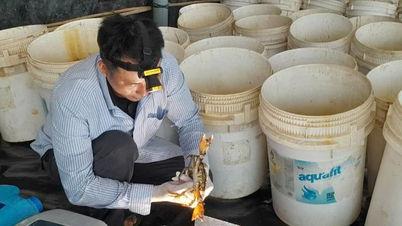










Comment (0)